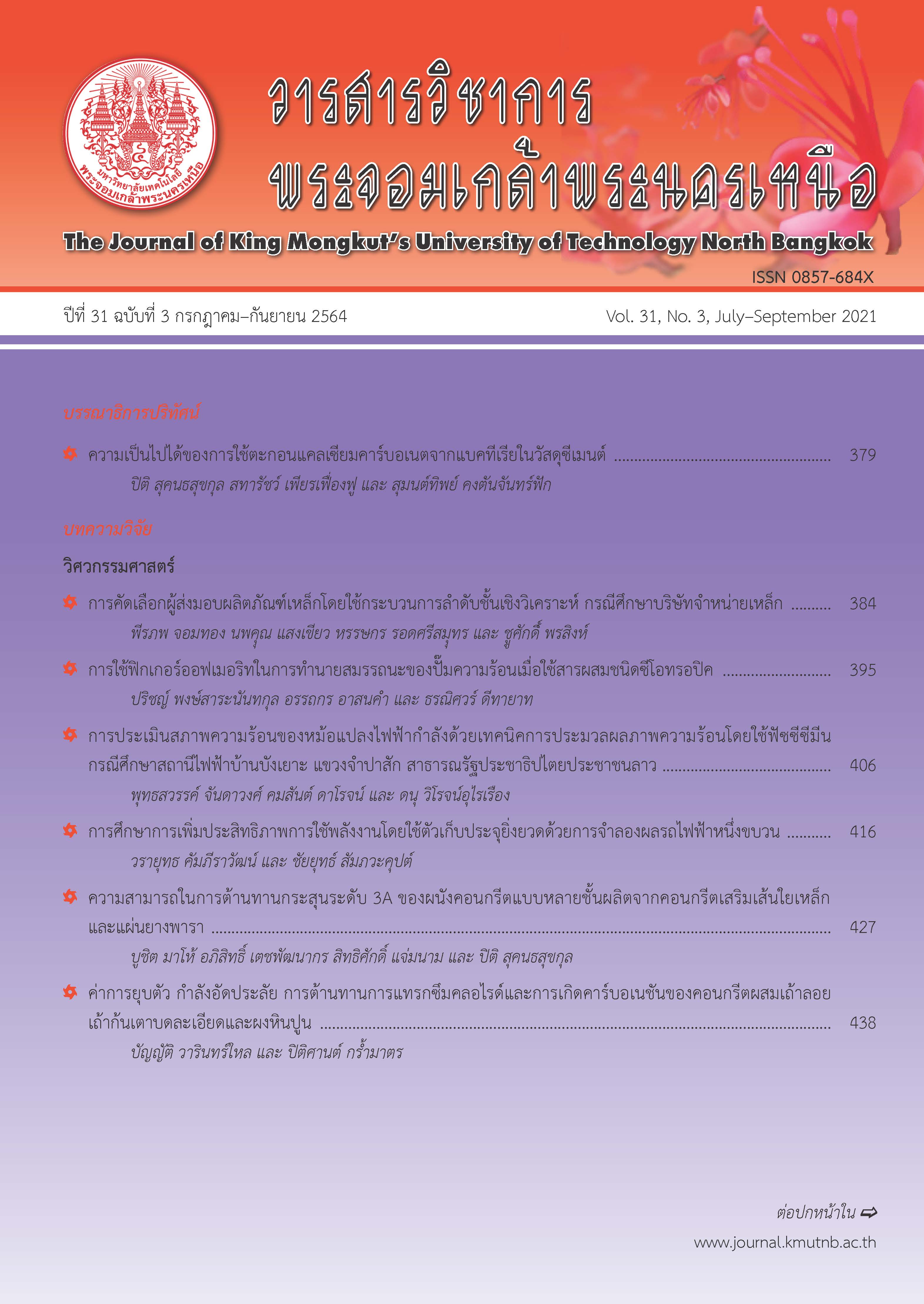ช่วงความเชื่อมั่นแบบภาวะน่าจะเป็นโพรไฟล์สำหรับพารามิเตอร์ของการแจกแจงเรขาคณิตในการแจกแจงเรขาคณิตค่าศูนย์เฟ้อ
Main Article Content
บทคัดย่อ
ในการประยุกต์ใช้เครื่องมือทางสถิติกับข้อมูลเชิงนับ บางครั้งค่าสังเกตศูนย์มีความถี่มากกว่าที่ควรจะเป็นสำหรับการแจกแจงที่ใช้ในการศึกษา การแจกแจงเรขาคณิตค่าศูนย์เฟ้อ (ZIG) เป็นอีกหนึ่งการแจกแจงที่นิยมที่ใช้อธิบายข้อมูลที่มีค่าศูนย์มากกว่าปกติ ในงานวิจัยนี้ ได้เสนอช่วงความเชื่อมั่นแบบภาวะน่าจะเป็นโพรไฟล์สำหรับพารามิเตอร์ของการแจกแจงเรขาคณิตใน ZIG โดยศึกษาในเชิงทฤษฎีและเชิงจำลอง เงื่อนไขสำหรับการหาขอบเขตล่างและบนของช่วงความเชื่อมั่นได้ถูกนำเสนอรวมถึงอสมการที่ใช้หาช่วงความเชื่อมั่น ผลจากการจำลองพบว่า ช่วงแบบโพรไฟล์ที่นำเสนอนี้ให้ความน่าจะเป็นคุ้มรวม (CP) ใกล้เคียงกับสัมประสิทธิ์ความเชื่อมั่นที่กำหนดในหลายกรณีที่ศึกษา และความยาวของช่วงโดยเฉลี่ยลดลงเมื่อขนาดตัวอย่างเพิ่มขึ้น ในบางกรณีที่มีตัวอย่างขนาดเล็ก ค่า CP ยังคงใกล้เคียงกับสัมประสิทธิ์ความเชื่อมั่นที่ต้องการ
Article Details
บทความที่ลงตีพิมพ์เป็นข้อคิดเห็นของผู้เขียนเท่านั้น
ผู้เขียนจะต้องเป็นผู้รับผิดชอบต่อผลทางกฎหมายใดๆ ที่อาจเกิดขึ้นจากบทความนั้น
เอกสารอ้างอิง
[2] A. C. Cameron and P. K. Trivedi, Regression Analysis of Count Data. New York, NY: Cambridge University Press, 2013.
[3] R. D. Joshi, “A generalized inflated geometric distribution,” M.S. thesis, College of Science, Marshall University, 2015.
[4] H. L. Sharma, “A probability distribution for rural out migration at micro level,” Rural Demography, vol. 12, no. 1&2, pp. 63–69, 1985.
[5] C. C. O. Iwunor, “Estimating of parameters of the inflated geometric distribution for rural outmigration,” Genus, vol. 51, pp. 3–4, 1995.
[6] T. R. Aryal, “Inflated geometric distribution to study the distribution of rural out-migrants,” Journal of the Institute of Engineering, vol. 8, no. 1, pp. 266–268, 2011.
[7] T. K. Edwin, “Power series distributions and zero-inflated models,” Ph.D. thesis, University of Nairobi, 2014.
[8] A. Mallick and R. Joshi, “Parameter estimation and application of generalized inflated geometric distribution,” Journal of Statistical Theory and Applications, vol. 17, no.3, pp. 491–519, 2018.
[9] C. D. Kemp and A. W. Kemp, “Rapid estimation for discrete distributions,” The Statistician, vol. 37, no. 3, pp. 243–255, 1988.
[10] M. J. M. Hussein and H. A. Hamodi, “Comparison count regression models for the number of infected of pneumonia,” Global Journal of Pure and Applied Mathematics, vol. 13, no. 9, pp. 5359–5366, 2017.
[11] M. I. Adarabioyo and R. A. Ipinyomi, “Comparing zero-inflated poisson, zero-inflated negative binomial and zero-inflated geometric in count data with excess zero,” Asian Journal of Probability and Statistics, vol. 4, no. 2, pp. 1–10, 2019.
[12] T. W. Yee, Vector Generalized Linear and Additive Models: With an Implementation in R. NY: Springer-Verlag New York, 2015.
[13] M. K. Patil and D. T. Shirke, “Testing parameter of the power series distribution of a zero inflated power series model,” Statistical Methodology, vol. 4, pp. 393 – 406, 2007.
[14] R. S. A. Alshkaki, “Estimation of the parameters of the zero-one inflated power series distribution,” Bulletin of Mathematics and Statistics Research, vol. 4, no. 3, 2016.
[15] K. E. C. Zavaleta, V. G. Cancho, and A. J. Lemonte, “Likelihood-based tests in zero-inflated power series models,” Journal of Statistical Computation and Simulation, vol. 89, no. 3, pp. 443–460, 2019.
[16] Y. Pawitan, In All Likelihood: Statistical Modelling and Inference Using Likelihood. Oxford: Clarendon Press, 2001.
[17] P. Srisuradetchai, “Profile likelihood-based confidence intervals for the mean of inverse Gaussian distribution,” The Journal of KMUTNB, vol. 27, no. 2, pp. 339–350, 2017 (in Thai).
[18] R. L. Graham, D. E. Knuth, and O. Patashnik, Concrete Mathematics: A Foundation for Computer Science. MA: Addison-Wesley Publishing Company, 1994.
[19] World Health Organization. (2020, October 12). WHO Coronavirus Disease (COVID-19) Dashboard.[Online]. Available: https://covid19.who.int/

